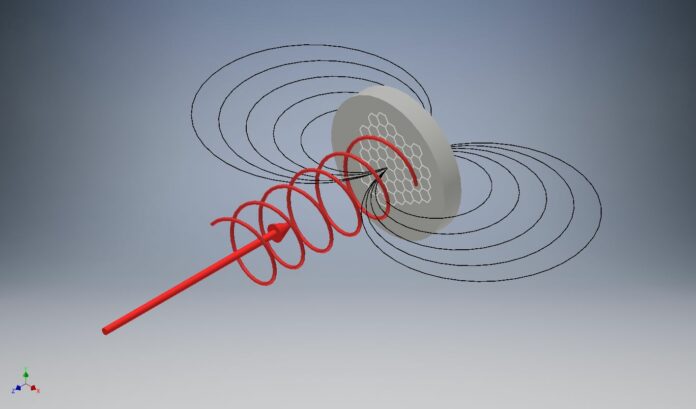Graphene- a true miracle material- is fragile carbon. It displays remarkable properties. One of its properties is its ability to conduct electricity extremely well.
An international team of scientists from Germany, Poland, India, and the USA took advantage of this property. They used well-established semiconductor techniques to apply thousands of tiny, micrometer-sized graphene discs onto a small chip. After that, this chip was subjected to short terahertz pulses.
The working group headed by the UDE chose a specific light source for the experiment, the FELBE free-electron laser at the HZDR, which produces incredibly powerful terahertz pulses to attain the finest possible circumstances. The result: The tiny graphene disks briefly turned into electromagnets.
It’s astonishing. Isn’t it?
What’s more exciting is that scientists could generate magnetic fields in the range of 0.5 Tesla, which is roughly ten thousand times the Earth’s magnetic field.
HZDR physicist Dr. Stephan Winnerl said, “These were short magnetic pulses, only about ten picoseconds or one-hundredth of a billionth of a second long.”
This study has added another addition to the diverse properties of graphene. Scientists believe the discovery will help develop future magnetic switches and storage devices.
How did they do it?
Scientists begin by polarizing the terahertz flashes in a specific way. This causes specialized optics to change the direction of oscillation of the radiation so that it can move helically through space.
The crucial outcome occurred: when these circularly polarized flashes struck the micrometer-sized graphene discs, the free electrons in the discs were stimulated by the radiation and started to circle, much like water in a bucket stirred with a wooden spoon. Additionally, the graphene disks turned into tiny electromagnets since a circulating current always produces a magnetic field by fundamental physics.
Martin Mittendorff, professor at the University of Duisburg-Essen, said, “The idea is quite simple. In hindsight, we are surprised nobody had done it before.”
Dr. Winnerl said, “The advantage: With our method, the magnetic field does not reverse polarity, as with many other methods. It, therefore, remains unipolar. In other words, during the ten picoseconds that the magnetic pulse from the graphene disks lasts, the north pole remains a north pole and the south pole a south pole – a potential advantage for certain series of experiments.”
Eventually, those tiny magnets may prove helpful for emerging technologies: These are generated by ultra-short radiation pulses, allowing the graphene discs to perform precise and quick magnetic switching operations. This has potential applications in magnetic storage technology and in the field of spintronics, which is a subfield of magnetic electronics.
Here, weak magnetic fields in the form of electron spins are transferred like tiny batons in place of electrical charges flowing through a processor. This will once again significantly accelerate switching operations. In the future, graphene disks may be utilized as switchable electromagnets to operate spintronic devices.
For this purpose, specialists must create extremely tiny, highly miniaturized terahertz generators, which is undoubtedly still a long way to go.
Journal Reference:
- J.W. Han, P. Sai, D-B. But, E. Uykur, S. Winnerl, G. Kumar, M.L. Chin, R.L. Myers-Ward, M.T. Dejarld, K.M. Daniels, T.E. Murphy, W. Knap, M. Mittendorff: Strong transient magnetic fields induced by THz-driven plasmons in graphene disks, Nature Communications, 2023, DOI: 10.1038/s41467-023-43412-x
